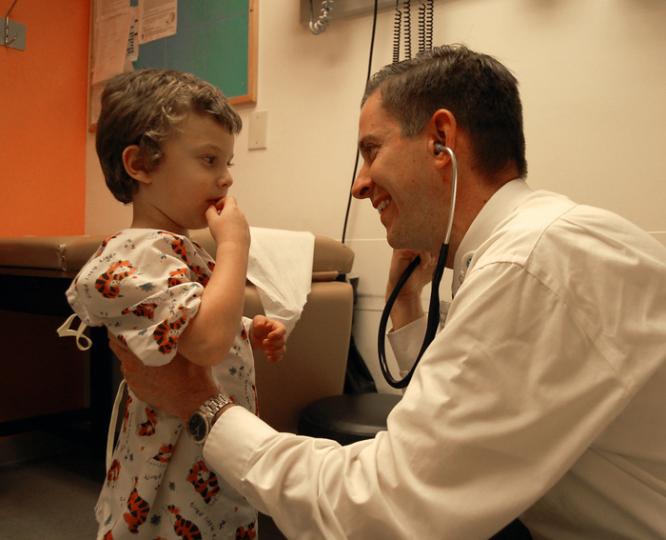U.S. health officials announced new guidance limits for antibiotics used for children due to the high amount of inappropriate uses of the drug.
The report, Principles of Judicious Antibiotic Prescribing for Bacterial Upper Respiratory Tract Infections in Pediatrics by the American Academy of Pediatrics, written in collaboration with the Centers for Disease Control and Prevention, said every year as many as 10 million U.S. children risk side effects from antibiotic prescriptions unlikely to help their upper respiratory conditions. Many of these infections are caused by viruses, which are not helped by antibiotics.

The guidelines for clinicians include:
-- Determine the likelihood of a bacterial infection: Antibiotics should not be used for viral diagnoses when a concurrent bacterial infection has been reasonably excluded.
-- Weigh benefits versus harms of antibiotics: Symptom reduction and prevention of complications and secondary cases should be weighed against the risk for side effects and resistance, as well as cost.
-- Implement accurate prescribing strategies: Select an appropriate antibiotic at the appropriate dose for the shortest duration required.
Released during Get Smart About Antibiotics Week, the report amplifies recent AAP guidance and promotes responsible antibiotic prescribing for three common upper respiratory tract infections in children: ear infections, sinus infections and sore throats.
"Our medicine cabinet is nearly empty of antibiotics to treat some infections," Dr. Tom Frieden, director of the CDC, said in a statement. "If doctors prescribe antibiotics carefully and patients take them as prescribed we can preserve these lifesaving drugs and avoid entering a post-antibiotic era."
By providing detailed clinical criteria to help physicians distinguish between viral and bacterial upper respiratory tract infections, the recommendations provide guidance for physicians that will improve care for children. At the same time, it will help limit antibiotic prescriptions, giving bacteria fewer chances to become resistant and lowering children's risk of side effects, Frieden said.
Antibiotic resistance occurs when bacteria evolve and are able to outsmart antibiotics, making even common infections difficult to treat. Each year more than 2 million U.S. adults and children get infections resistant to antibiotics and 23,000 die as a result, an earlier CDC study found.
"Many people have the misconception that since antibiotics are commonly used that they are harmless," said Dr. Lauri Hicks, co-author of the report and medical director of CDC's Get Smart: Know When Antibiotics Work program. "Taking antibiotics when you have a virus can do more harm than good."





